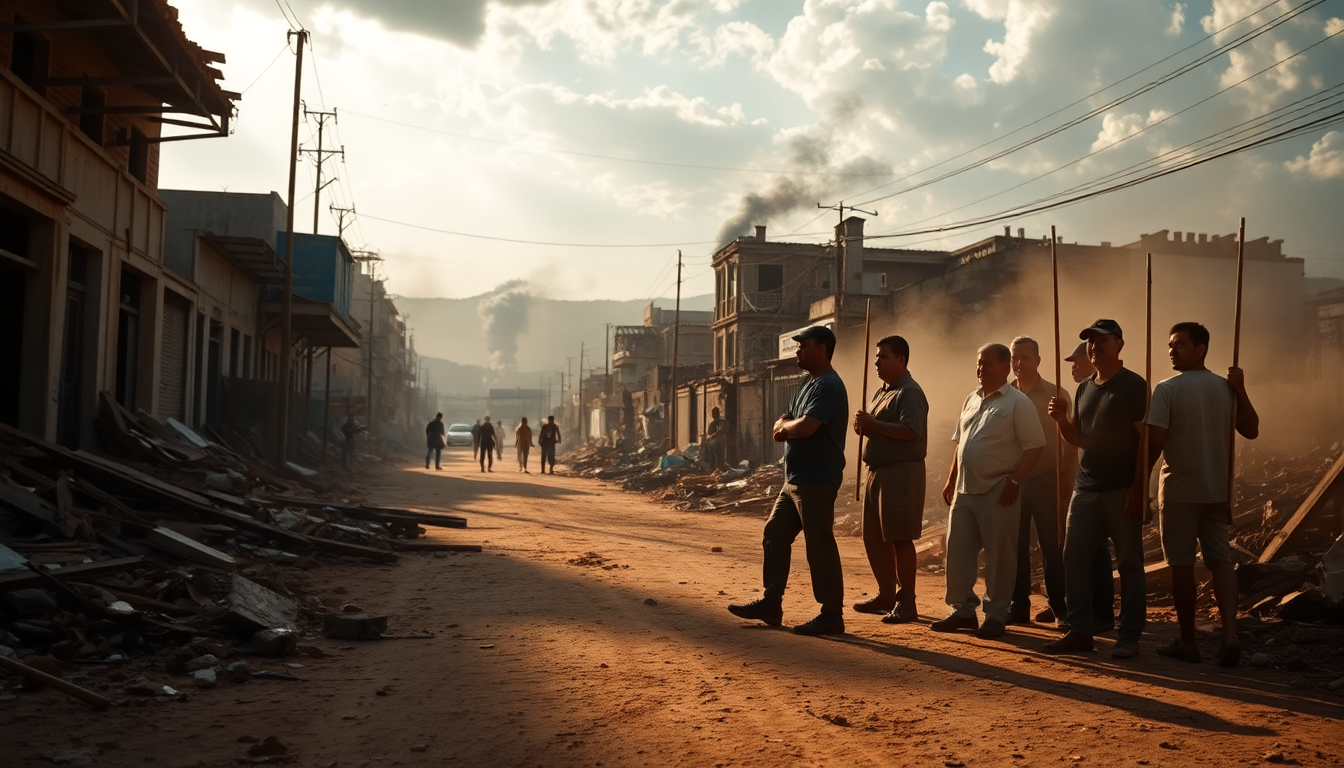Table of Contents
After a powerful 5.7 magnitude earthquake rocked Guatemala, a series of events unfolded that shed light on the complex relationship between fear and justice in communities grappling with crises. This earthquake, which wreaked havoc in areas like Santa Maria de Jesus, sent residents scrambling for answers about their safety—a situation that tragically escalated into a case of vigilante justice. The incident, culminating in the lynching of five men accused of looting, highlights just how fragile law and order can become when disaster strikes.
What Happened in Santa Maria de Jesus?
As night descended after the quake, reports began to surface about looting in Santa Maria de Jesus. Police spokesperson Cesar Mateo noted that the accused men allegedly took advantage of the chaos, breaking into homes while many residents sought refuge in shelters or at relatives’ houses. While theft is indeed a crime, the community’s reaction raises pressing questions about justice and morality. Mateo pointed out that while robbery is illegal, lynching is equally a serious crime, showcasing the complicated nature of seeking justice amid disaster.
The situation escalated rapidly. Fueled by fear and anger, residents gathered to confront the accused. Reports indicate that community members blocked police attempts to detain the men, resulting in a violent showdown. The accused faced brutal treatment—beaten with sticks and stones before being tragically set ablaze. This response is emblematic of a larger trend in Guatemala, where frustrations over crime and ineffective law enforcement often lead to similar, shocking incidents.
Vigilante Justice: A Troubling Trend in Guatemala
Vigilantism isn’t a new phenomenon in Guatemala. A local civil society organization reported that between 2008 and 2020, such acts resulted in 361 fatalities and left 1,396 others injured. These staggering numbers reflect the desperation felt by communities where the justice system is viewed as ineffective or unresponsive. The devastation of the earthquake only intensified these feelings, as residents faced the dual challenges of losing their homes and feeling unsafe in a time of crisis.
In Santa Maria de Jesus, a community with a strong Indigenous Mayan presence, residents endured not only the immediate aftermath of the earthquake but also the tough road ahead in rebuilding trust and safety amidst a climate of fear. Compounding the challenges were power outages and blocked roads from landslides, which hindered rescue and recovery efforts, leaving many feeling vulnerable and anxious about their safety.
How is the Government Responding?
In the wake of the earthquake’s devastation, the Guatemalan government has mobilized humanitarian aid to support the affected communities. The disaster coordination agency, Conred, is assessing damage and working to distribute essential supplies like solar lamps, blankets, and kitchen kits. International organizations, such as the United Nations refugee agency (UNHCR), have also stepped in, playing a crucial role in delivering much-needed resources to those impacted.
As communities start to recover from the immediate physical impacts of the earthquake, rebuilding social cohesion and trust becomes critical. Tackling the underlying issues that lead to vigilante justice—like ineffective law enforcement and concerns about community safety—will be vital in preventing future tragedies. The events in Santa Maria de Jesus serve as a stark reminder of how crises can amplify existing societal tensions, underscoring the need for constructive and lawful responses to crime and insecurity.


